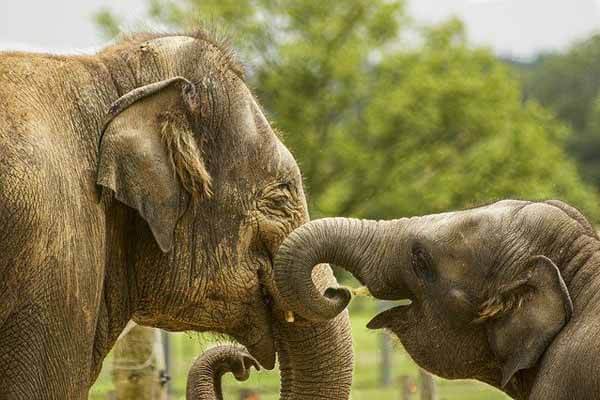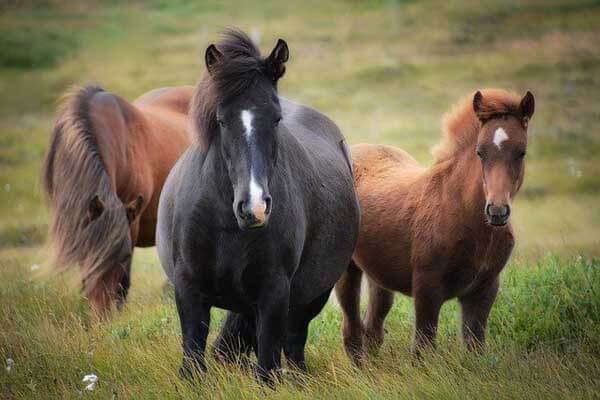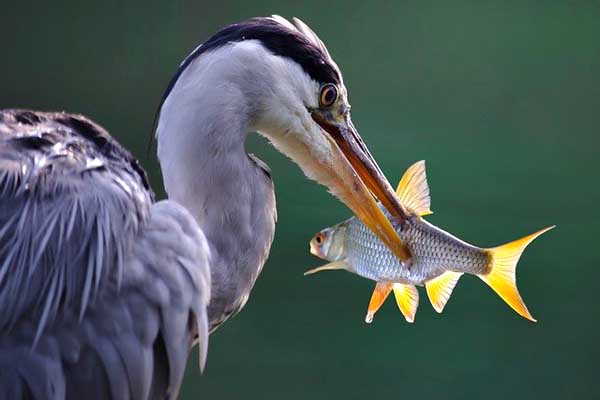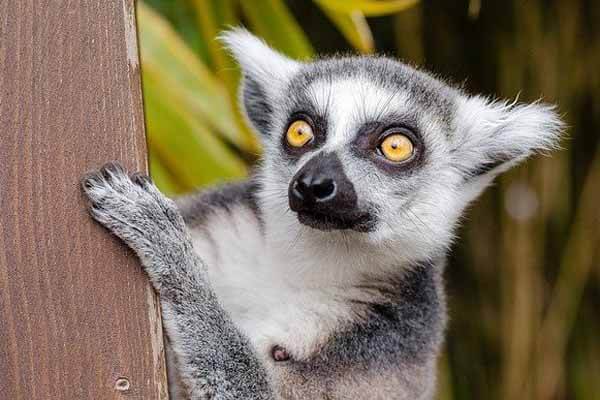Today we’re going to tell you interesting facts about the jaguar.
Facts about the jaguar
- Jaguar is the largest member of the cat family in the two Americas. Together with tigers and lions, the Jaguars belong to the Panther family. Jaguars live only in the New World countries – South and Central America.
- The largest habitats of jaguars are the jungles of Central America and the ocean coast of Argentina.
- Previously, these animals were very common in South America, but recently the population of these predators has declined by a factor of 3.
- In countries such as El Salvador and Uruguay, this large cat has been completely exterminated. The predator is now listed in the Red Book.
- There are 9 species of Jaguars: Amazonian; Peruvian; Paraguayan; Mexican; Texas; Arizona; Central American; Brazilian; Goldman. The Texas jaguar is considered completely exterminated.
- The color of the jaguar is very similar to that of other members of the cat family – ocelots, cheetahs, and leopards.
- The color of the animal is sand and red. The stomach and inner side of the legs are white. Dark spots in the form of dots, rings, and sockets are scattered all over the body. The fur is short and thick. The jaguar has short, powerful paws, which makes it a bit stocky, but this does not interfere with its agility.
- Jaguars are the third largest of all big cats after tigers and lions. Adult jaguars without a tail range in body length from 120 to 190 centimeters and rarely weigh more than 120 kilograms.
- Many people confuse jaguars with leopards, but jaguars are much larger and stronger than leopards, although they are very similar in appearance.
- The name “jaguar” probably comes from a similar-sounding word in the Guaraní language spoken by Indians in modern Paraguay. The word translates as “beast that kills with one blow”.
- The speckled color of the jaguar is unique, just like the pattern on a man’s fingers. There are no two predators of the same kind in nature, even if they are related.
- At one time, many Indian tribes worshipped jaguars, honoring them as sacred animals.
- The ancient Mayans believed that jaguars were a symbol of the power of the gods. The best Mayan warriors in ancient times called themselves Jaguars. Only they were allowed to wear the garment of this beast’s skin.
- In some Indian tribes, there was a tradition to tie on a forehead of small children special plaques that their head was similar to a skull of a jaguar.
- The ancient Mayans believed that the animal could hypnotize its prey and prevent it from moving.
- The most unusual representative of these predators is the black jaguar, an animal that is erroneously called a panther. The panther is not considered a separate species, it is the name of a biological species.
- The black jaguar is just a manifestation of melanism, i.e. it’s an individual with a genetic variant of atypical coloration.
- Different species of jaguars live in different areas. However, they have similar lifestyles.
- The oldest jaguar fossil remains ever found have been in the ground for about two million years.
- The area of the animal’s habitat is a triangle of 30-100 km². Females have less space, and males have more space.
- Three times a month, the predator traverses its territory. Good speed allows it to do so fast enough.
- Jaguar hunting grounds often overlap. The nature of the predator is such that it treats its brethren calmly but is very hostile to other members of the cat family in its territory.
- Unlike a cheetah who prefers to attack his prey with a rush, jaguars are ambushed.
- Jaguars cannot cross with other types of the cat family. The exception is lions. True, the offspring thus obtained are born sterile, without the ability to reproduce further.
- It is not uncommon for this cat to attack livestock.
- Jaguars lead an exceptional nightlife, preferring to sleep somewhere in the daytime. Jaguar hunting starts at night. The beast tries for days to catch its prey in one place and then moves to another part of the territory.
- Since the jaguar lives in impassable jungles, mountains, or on the ocean coast, its food can be both bird and pair-footed. The beast usually hunts wild pigs, deer, foxes, roes, and rodents.
- The area the jaguar hunts can be incredibly large. Well, sometimes it reaches 500 kilometers. And that’s no surprise because a jaguar is a freedom-loving animal.
- These big cats have strong jaws, so they kill their prey, usually by grabbing the neck, trying to get the victim off their feet.
- Jaguars swim great. There’s evidence that they’ve swum great distances – tens of kilometers. Jaguars often use logs to overcome water obstacles in the same way a man would use them – they cling to them and row.
- The main trump card of these cats is speed, so rare prey can be saved. Neither trees nor water can be a refuge, as the jaguars swim and climb trees perfectly.
- Jaguars have been recorded to attack even the largest anacondas, which are the largest snakes on the planet.
- Jaguars sometimes even attack crocodiles, although mostly young – an adult crocodile is too dangerous for this proud member of the cat family.
- Jaguars can imitate the voices of monkeys to lure the latter’s congeners. In particular, researchers have seen a jaguar imitate the screams of a baby monkey. The adult monkeys rushed to help, but luckily they spotted the predator in time and fled.
- They eat jaguars at 2 approaches with a break of 10-12 hours. The remains of the murdered animal can simply be abandoned by the predators and not come back to them.
- Puberty in these cats comes at 3. Since then, predators can mate at any time as they do not have a specific breeding season.
- It happens that during the mating season, they gather in groups in one place. The female chooses her pair and comes to the territory where the male lives.
- The largest individuals, with a body length of almost 2 meters, live in the jungle of Brazil. The weight of these animals is more than 100 kg, but on average jaguars weigh 80-90 kg. Males are larger than females.
- These predators are hunted from ambush, looking for their prey while watering or eating. They attack from the side where the victim can’t immediately see the approaching animal.
- The duration of pregnancy in Jaguars is 100-110 days. Usually, 1-4 calves are born.
- A jaguar calf the first year after birth is very closely connected with the mother, so it does not fall one step behind her.
- Usually, after birth, Jaguars live with the mother for 2-3 years. During this time, they learn from their mother how to hunt and survive.
- The largest jaguar ever encountered by researchers weighed 158 kilos. But usually, jaguars weigh less – within 100-120 pounds.
- Jaguars can handle almost any prey, but they are extremely secretive and inventive.
- To see a jaguar, if he doesn’t want it, is almost impossible – any wildlife researcher can confirm that.
- If several animals are found in the same area, it is usually a female and her young offspring.
- Zoologists claim that these animals are very curious, but are not particularly aggressive.
- Despite the good speed, jaguars do not always chase their prey if they try to escape.
- Jaguars attack humans extremely rarely, mostly only in self-defense. The known attacks were mostly provoked by the people themselves.
- There are no natural obstacles to these animals. They can live in mountain forests at an altitude of 2 kilometers, climb in impassable jungles, sleep on trees and overcome water obstacles.
Did you like interesting facts about the jaguar? Share it with your friends.
Facts About Jaguars
Learn more facts about jaguars. The jaguar is one of the largest living cat species. It is the largest cat species in the Americas and the third-largest in the world. It has a body length of 1.85 meters and can weigh 96 kilograms. Here are a few interesting facts about jaguars. Read on to discover more about this huge cat! There are some interesting facts about jaguars you should know.
The jaguar is the only species of its kind. While several subspecies have been described in the past, no valid subspecies have ever been recognized by the Cat Specialist Group. It is an apex predator and lives in many parts of the world. The only species that it preys on is humans. This animal is also a vital part of its ecosystem, keeping food chains balanced. Listed below are 10 interesting facts about jaguars that you should know.
Jaguars can live anywhere in the Americas. Although they were once found in central Argentina to the southern U.S., their range has decreased since the 1880s. Now, they live in small numbers throughout Central America. While their natural habitat is tropical rainforests, they can also live in grasslands and savannas. If you’re wondering how a jaguar lives in such an area, read on.
Jaguars have black spots that appear on their heads. They are spotted on their necks, heads, and tails. While they are known for their fierceness and destructiveness, jaguars are known for their intelligence and ferocity. Their apex predators play an important role in their ecosystems, keeping the food chain in balance. Regardless of their size, jaguars are powerful animals and are truly feared.
While jaguars are feared animals, they’re also fascinating animals. The ferocious four-legged cats have an awesome name that literally means “he kills with a leap”: the big jaguars in the video are known for their ferociousness and their beautiful fur. In addition to their striking appearance, jaguars are also critically endangered. These solitary creatures deserve much more attention than their 15-second fame.
In addition to their beautiful coat, jaguars have an interesting name. Their name comes from the Native American word jaguar, which literally means ‘he who kills with a single leap.’ They hunt by jumping on their prey and killing them with a single leap. They’re not very picky eaters. They’ll eat almost any animal that walks by their way. They’re often referred to as ‘tiger’ in the wild.
Jaguars are not afraid of water. They prefer to live in swamps and rainforests and have been known to live in zoos. Despite their large size, they are still able to survive in very small numbers in areas with the little human population. Their habitat ranges from Mexico to South America and includes most of the Amazonian countries. These facts about jaguars will help you understand the nature of this amazing creature.
Jaguars are solitary. They do not have family members. They live alone until they reach breeding age. They are also good swimmers. However, jaguars are not solitary. In fact, they are often seen playing with children. Their diet consists of a variety of plants, including fruits and nuts. The animal is also able to travel up to 20 miles per day. If it is threatened, it might be time to take action.
Jaguars are the most common predators in the Americas. They are apex predators, which means they hunt a wide range of different animals. Typically, they feed on capybara and giant anteaters. But they also eat wild boars, wild pigs, and small mammals. They have no other natural enemies. While it is true that jaguars are apex predators, they are not apex-apex predators.
The jaguar’s jaws are strong. They can pierce the skull of its prey and even splinter the brain. Their jaws can break the hard shells of turtles. They can swim up to 240 cm. Despite being the third-largest cat in the world, the jaguar is apex predator. Its padded paws are hard-shelled and able to crack a walnut.









Thank you for the article! Such interesting and amazing jaguar facts!